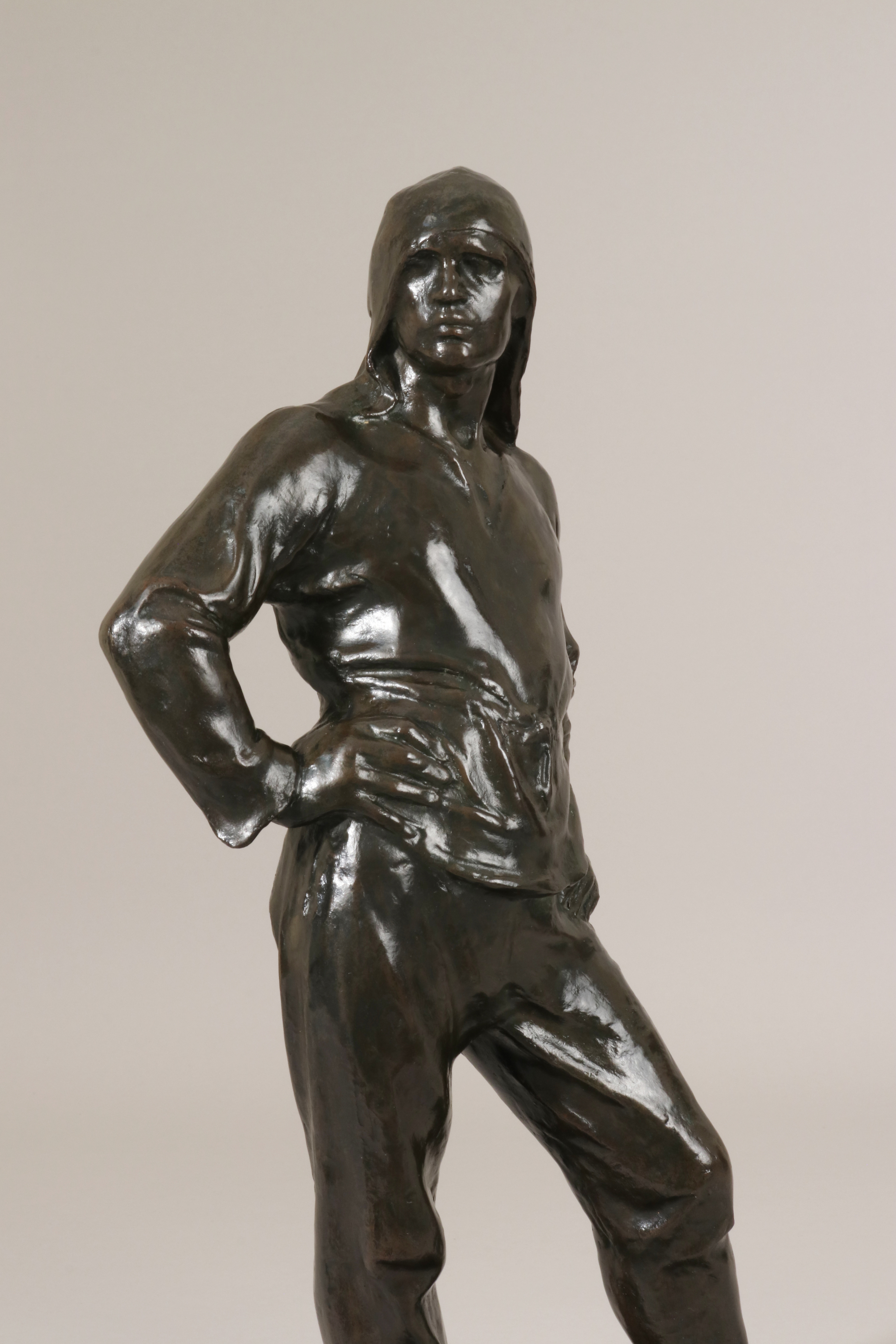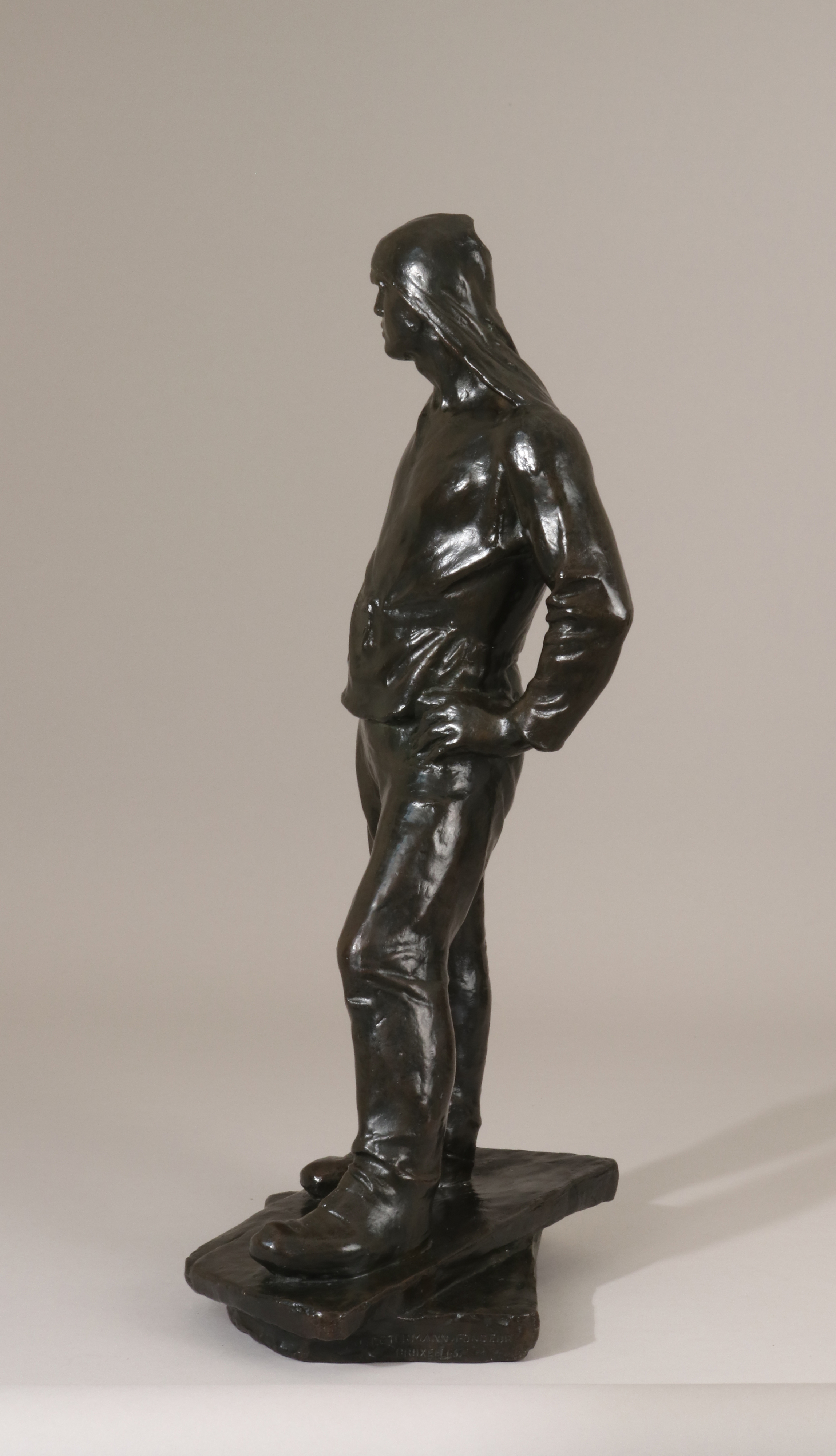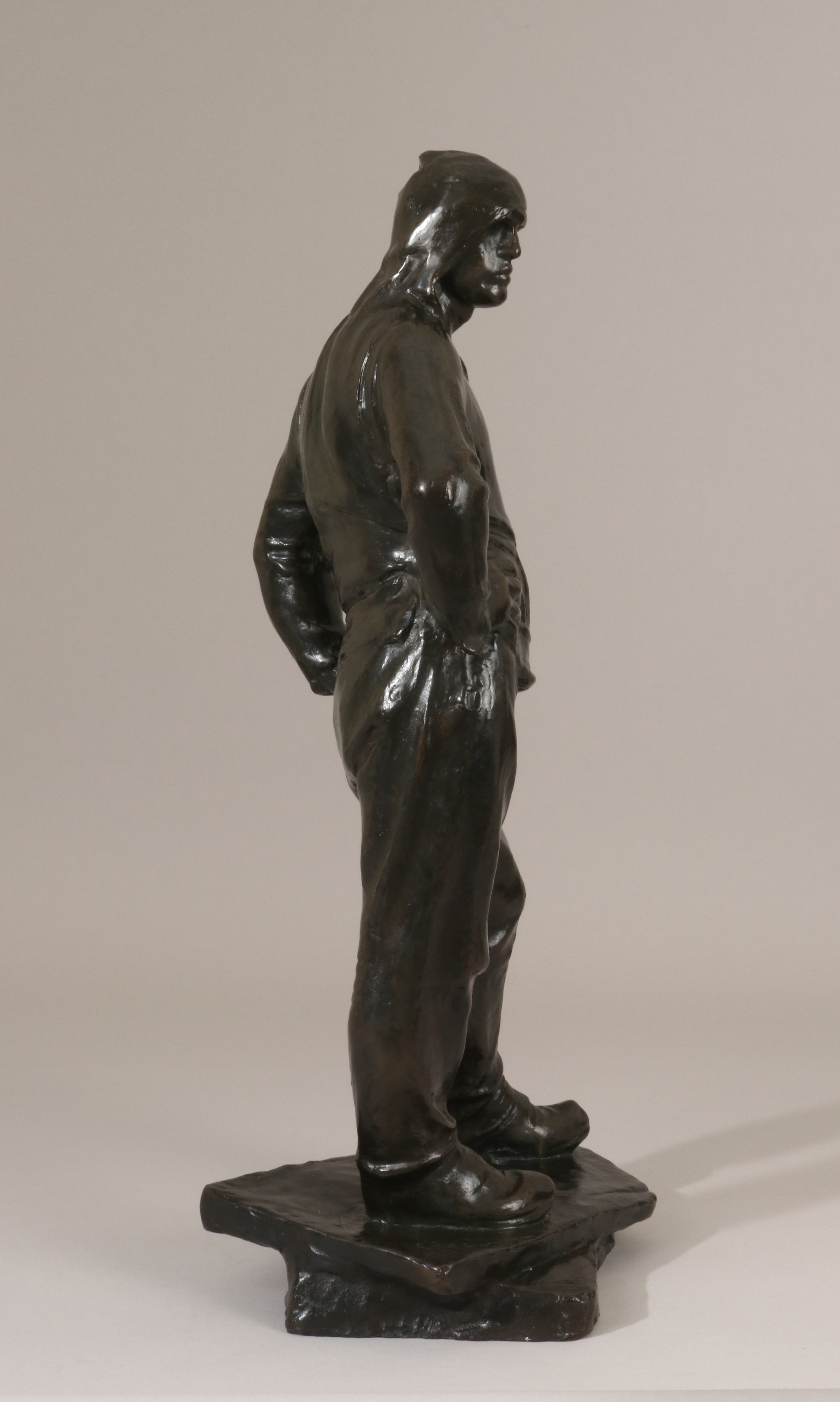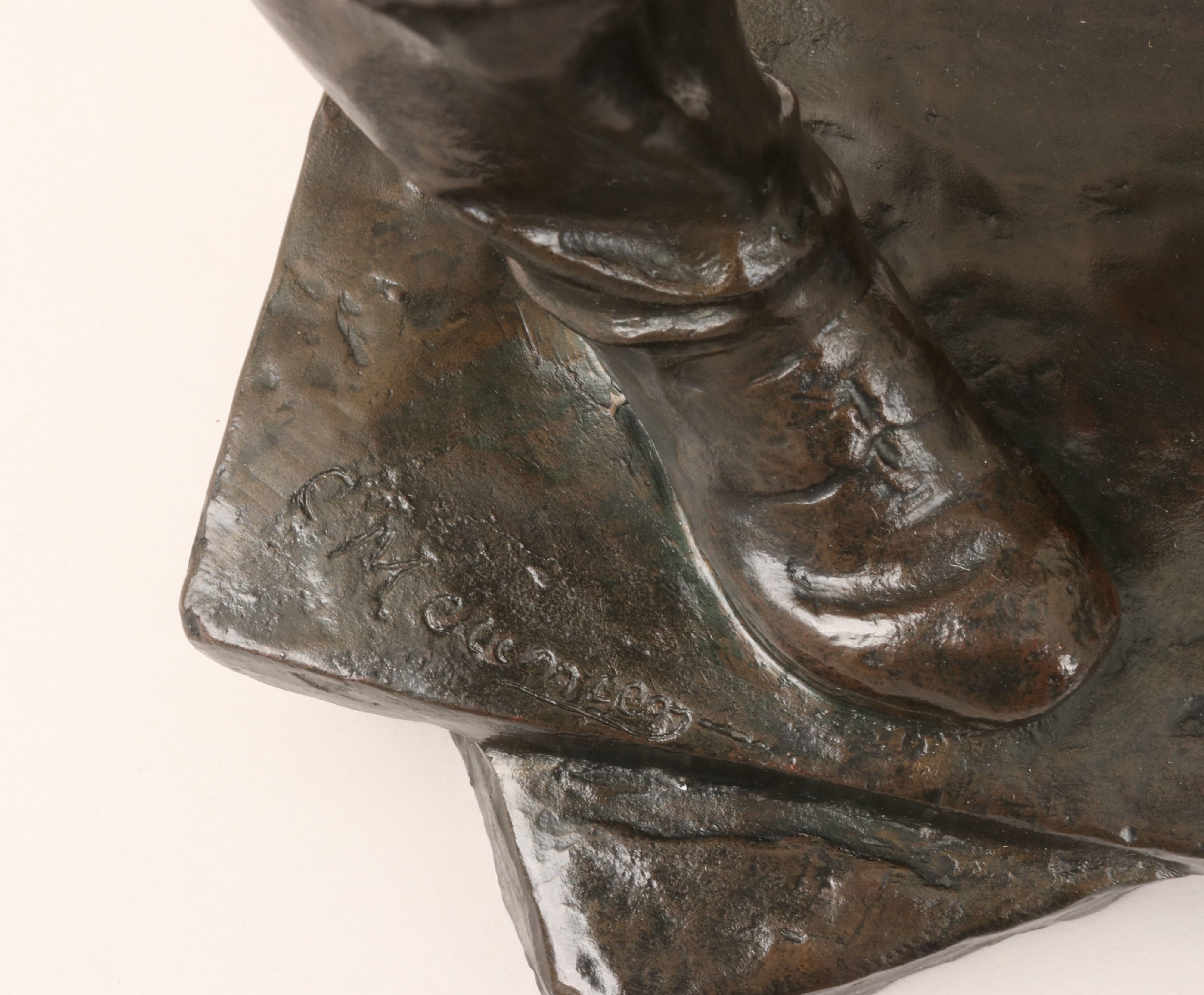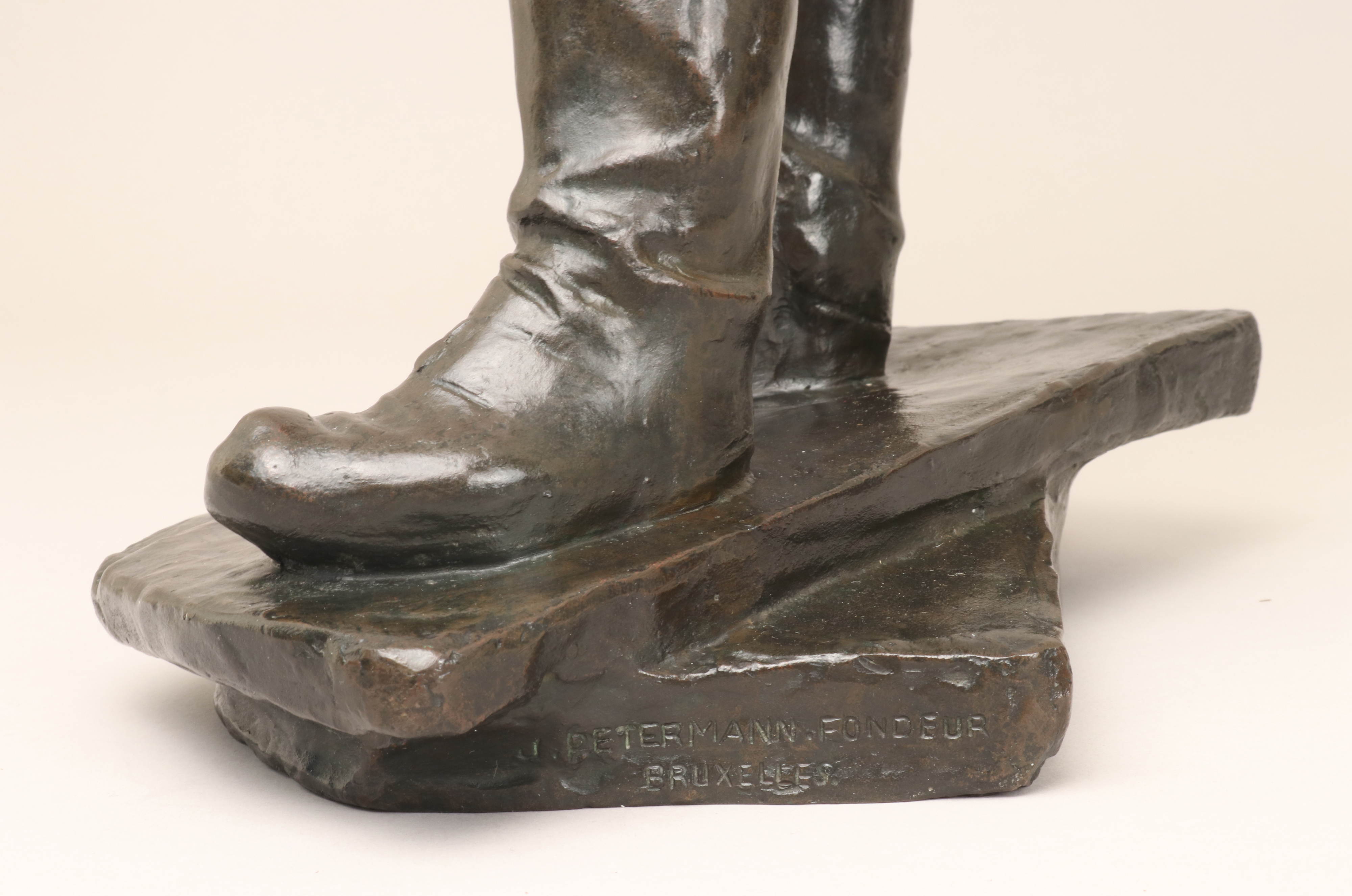The Dockhand (Le Débardeur du port d’Anvers)
Constantin Meunier Belgian
Founder J. Petermann Foundry Belgian
This cast is one of few known bronzes of this composition reproduced in Meunier’s lifetime at the J. Petermann Foundry in Brussels. Meunier first presented the composition in wax at the 1885 Les XX exhibition in Brussels. Four years later, the sculpture received critical acclaim upon its presentation in plaster at the National Society of Fine Arts in Paris, and the first known version in bronze was subsequently purchased by the French state.
Throughout the 1880s, Meunier developed an iconography of labor in both his pictorial and sculptural oeuvre that gave monumental presence to the lowest echelons of society and lionized the working man. His focus on the subject corresponded with the advent of the Belgian labor movement. Dockhands at the quays of Antwerp performed the physically demanding labor of loading and unloading cargo from ships. Lacking formal employment, they worked job to job – a situation that made them vulnerable but also gave them an independence and autonomy in which they took pride. Meunier’s Débardeur radiates self-confidence in his posture and immutability in his gaze. The figure’s contrapposto and noble profile echo the confident pose and comportment of Michelangelo’s David, which, in turn, draws on the heroic proportions of ancient Hellenic statuary. The sculpture betrays Meunier’s keen powers of observation – through the detailed depiction of the dockhand’s uniform – while acknowledging an ancient pedigree that would have appealed to liberal-minded art lovers of the time.
Due to rights restrictions, this image cannot be enlarged, viewed at full screen, or downloaded.
This artwork is meant to be viewed from right to left. Scroll left to view more.


